With much of the American economy in self-imposed shutdown to prevent the spread of coronavirus, April’s colossal surge in unemployment delivered a historic blow to workers.
The US economy lost 20.5 million jobs in April, the Bureau of Labor Statistics said Friday — by far the most sudden and largest decline since the government began tracking the data in 1939.Those losses follow steep cutbacks in March as well, when employers slashed 870,000 jobs. Those two months amount to layoffs so severe, they more than double the 8.7 million jobs lost during the financial crisis.For many Americans who lost their jobs and their homes in the 2008 financial crisis, this moment reopens old wounds. It took years to rebound from those setbacks. When the economy eventually did crawl back, US employers added 22.8 million jobs over 10 years — a victory for all those who had weathered the Great Recession.Now, the coronavirus pandemic stings not only because of the public health crisis it has inflicted — but also because it wiped out nearly that whole decade of job gains in just two months.
Read MoreThe unemployment rate soared to 14.7% in April, its highest level since the BLS started recording the monthly rate in 1948. The last time American joblessness was that severe was the Great Depression: The unemployment rate peaked at 24.9% in 1933, according to historical annual estimates from the BLS.
By all accounts, it’s been a devastating two months for American workers.”Each unemployed person is a person whose life is now in turmoil,” White House Economic Advisor Kevin Hassett told CNN’s Poppy Harlow, describing the report as “heartbreaking.”
How we got here
In late March, state and local governments enacted stay-at-home orders to slow the spread of the coronavirus. Businesses suddenly closed en masse, laying off or furloughing millions of workers. The government’s jobs report shows some of the steepest job losses in leisure and hospitality, which lost 7.7 million jobs, and retail, which lost 2.1 million jobs.
Each unemployed person is a person whose life is now in turmoil."
Even as hospitals struggled to serve an influx in patients, health care workers suffered layoffs, too, with outpatient services like physicians and dentists’ offices cutting 1.2 million jobs in April.Food and beverage stores, which have also been essential during the crisis, lost 42,000 jobs.And as terrible as those numbers are, they don’t tell the full story.The jobs numbers come from a survey of employers, and do not include independent contractors like Uber and Lyft drivers in the gig economy.
Likewise, the unemployment rate, which comes from a survey of households, probably undercounts the number of jobless Americans, too.
People are only counted as “unemployed” by the BLS when they have been out of work but actively searched for a new job in the prior four weeks. Or, if they were a “temporary layoff” with the expectation of being rehired within six months. Among the 23 million people who were counted as unemployed in April, about 18 million were “on temporary layoff.” While that’s a stark number, it could be an encouraging sign that for many people, job losses could be short lived — and they’ll be able to return to work when businesses re-open.

Visual: 14.7% unemployment is tragic, and it doesn’t even include everyone who’s out of work
That said, millions of other laid-off workers were not even included in the unemployment rate. With much of the country still under stay-at-home orders, many jobless workers weren’t looking for new jobs in April. Instead of being counted as “unemployed,” those people were categorized as having dropped out of the labor force. The employment-population ratio, which measures the share of the US population over age 16 with a job, shrank to 51.3% in April, down from 60% in March and its lowest level on record since the BLS started tracking that number in 1948.Economists expect many people will be able to find work again as businesses gradually reopen, but it could take months or even years for the job market to return to its pre-pandemic strength.
Ripple effects
Historically, the most disruptive aspect of recessions has been that jobs disappear and it takes years for companies to create new ones, said Adam Ozimek, chief economist at Upwork, a website that connects businesses and freelancers. That dynamic may be different in the coronavirus recession, where the optimistic outlook is that many — but not all — jobs will bounce back.The leisure and hospitality sectors could take longer to recover, as social distancing policies have destroyed companies’ business models.Barbara Hull, 38, was a server at Caesar’s Palace in Las Vegas until March 18 when the lockdown began. “We all kind of knew it was coming,” she said.
“Financially, it’s scary for us [servers], because when we’re going back we don’t know what we’re going back to,” she said about the reopening of the economy. “The whole point of Vegas is to bring people together for this experience, and we don’t know how long it will take until we get back to that.”She can’t imagine it will be the same experience with servers like herself wearing face masks, she said.

Photos: An economy at a standstillTravis Medlock, owner of the Little Shop of Ramen, looks over a row of empty stools inside his restaurant in Mariposa, California, on April 29. During the coronavirus pandemic, Medlock now only takes orders to go. Hide Caption 1 of 11
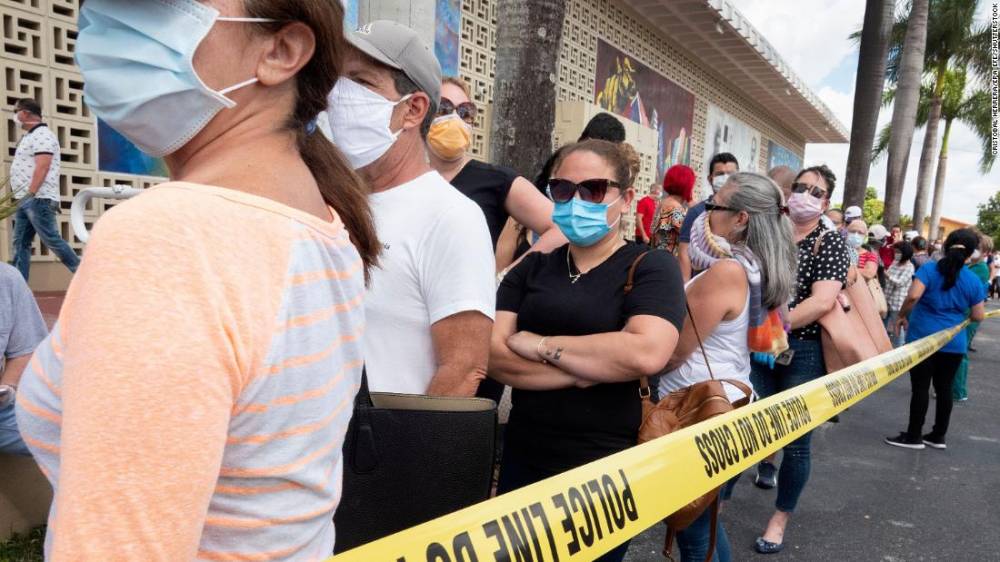
Photos: An economy at a standstillPeople line up to apply for unemployment benefits in Hialeah, Florida, after the state labor agency’s website struggled to keep up with an influx of claims in early April.Hide Caption 2 of 11

Photos: An economy at a standstillA pedestrian in San Francisco walks past a boarded-up St. Francis Drake Hotel on March 24. Governors from coast to coast told Americans not to leave home except for dire circumstances, and they ordered nonessential businesses to shut their doors. Hide Caption 3 of 11
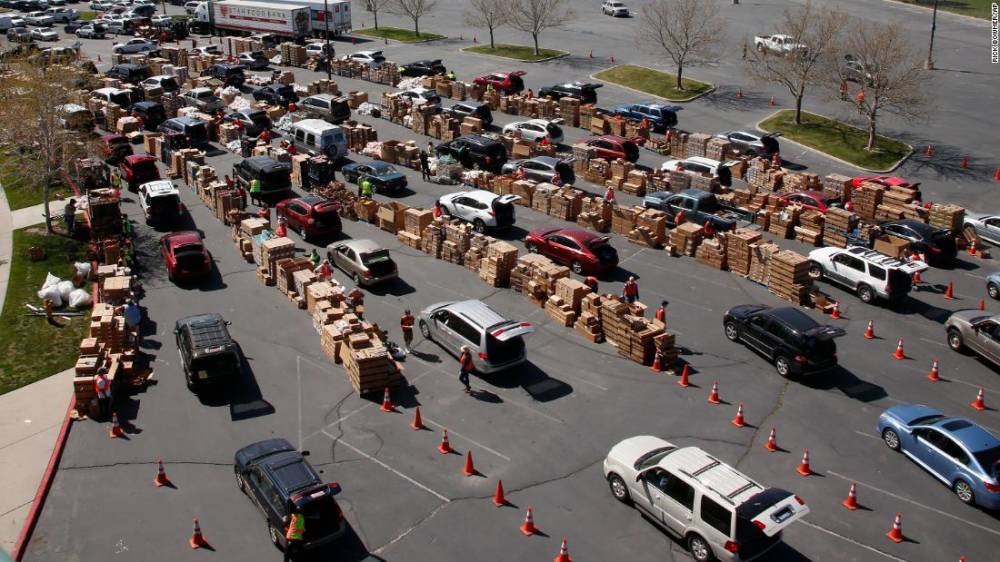
Photos: An economy at a standstillCars line up at the Utah Food Bank’s mobile food pantry in West Valley City, Utah, on April 24. As job losses continue during the pandemic, more families have sought food assistance. Hide Caption 4 of 11

Photos: An economy at a standstillA person walks past shuttered storefronts in the Bronx as all nonessential businesses in New York were ordered closed during the pandemic. Hide Caption 5 of 11
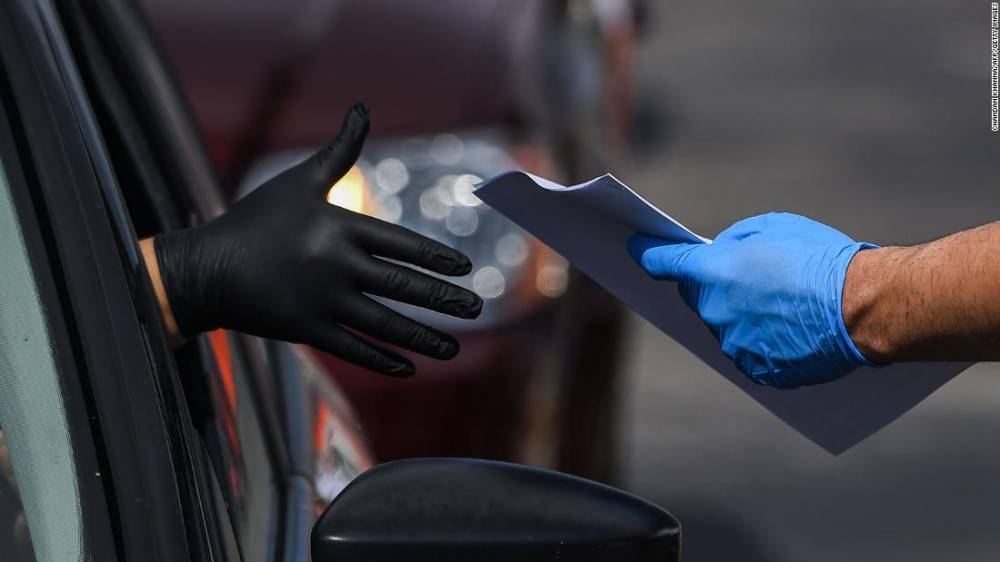
Photos: An economy at a standstillA man is handed an unemployment form April 8 at a drive-thru collection point outside the John F. Kennedy Library in Hialeah, Florida.Hide Caption 6 of 11

Photos: An economy at a standstillA sign in downtown Seattle, pictured in March, calls for the suspension of rent during the pandemic.Hide Caption 7 of 11
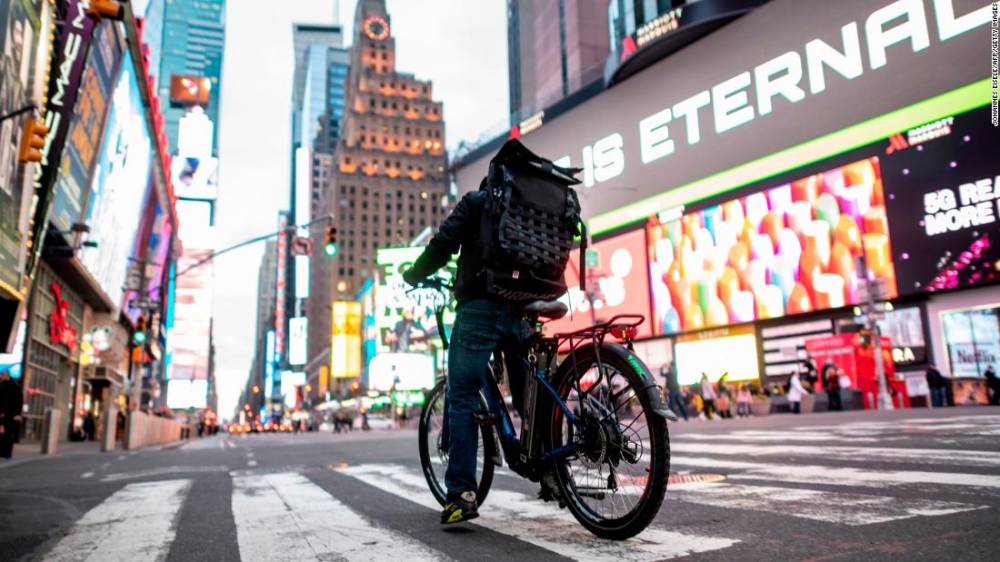
Photos: An economy at a standstillA food delivery worker crosses the street in New York’s Times Square on March 17. Food delivery workers have become essential in the city after restaurants and bars closed. Hide Caption 8 of 11

Photos: An economy at a standstillElizabeth Ruiz, 7, puts up Post-It notes that spell out “God Bless U” as she and her mother, Daylin Lemus, wait in a line of hundreds of cars at a food bank in Hyattsville, Maryland, on May 5. “This is the first food bank we have come to,” Lemus said. “My income is less than before, so we are coming in case things get worse. I’m worried about stores running out of chicken. I have been looking for two weeks and can’t find it anywhere.” Hide Caption 9 of 11
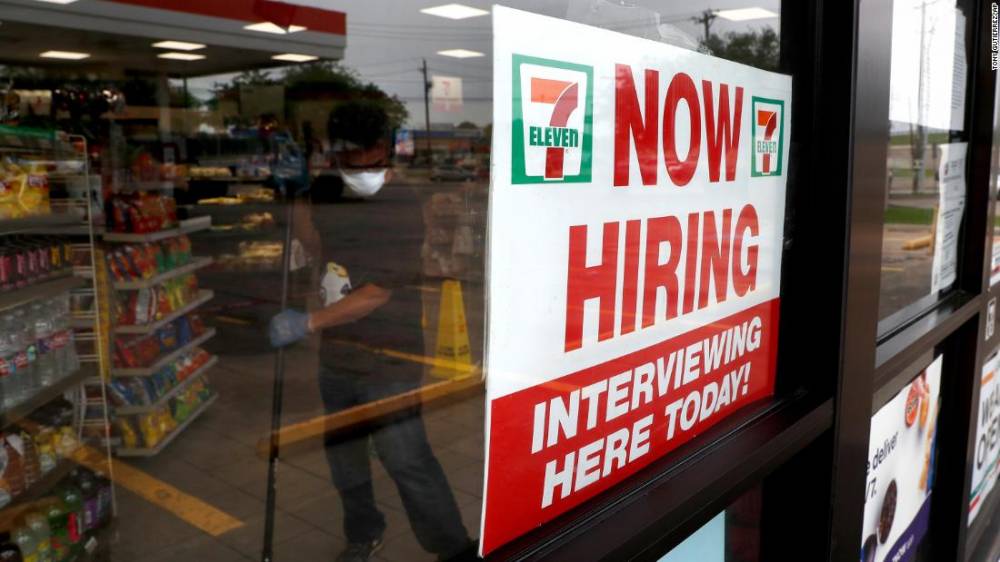
Photos: An economy at a standstillA sign at a 7-Eleven store in Dallas reads “Now Hiring” as an employee inside the store mops the floor in April.Hide Caption 10 of 11

Photos: An economy at a standstillA woman wearing a face mask walks past a message of support in front of The Anthem, a popular live music venue in Washington, on April 29.Hide Caption 11 of 11
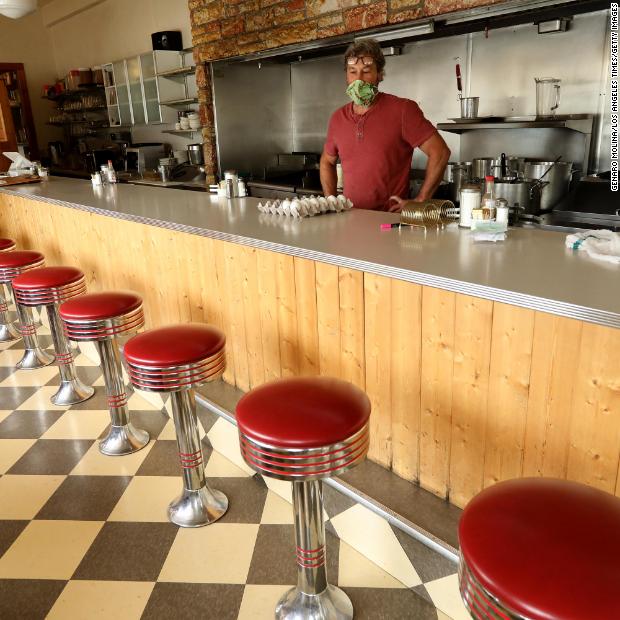

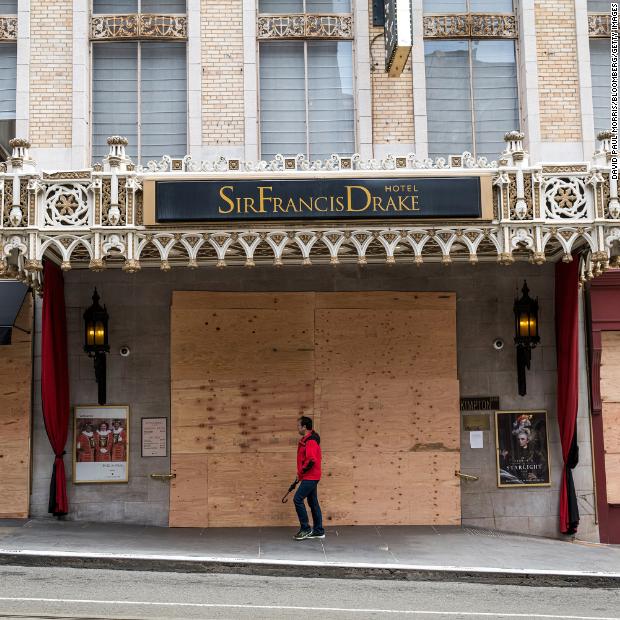

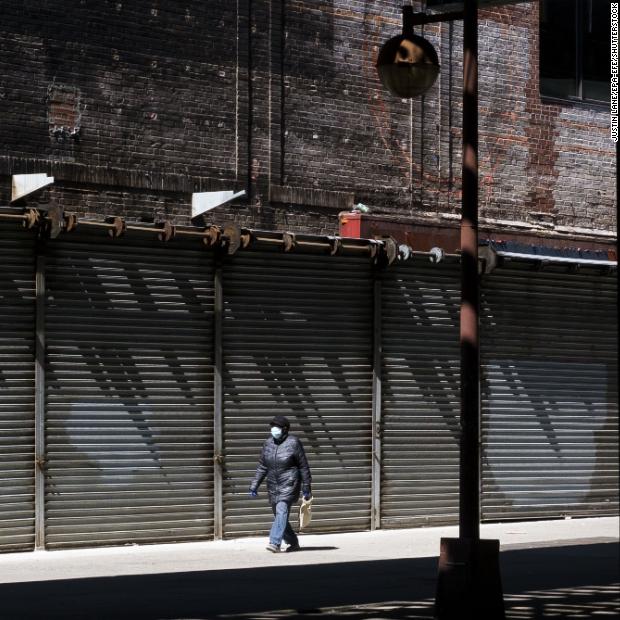

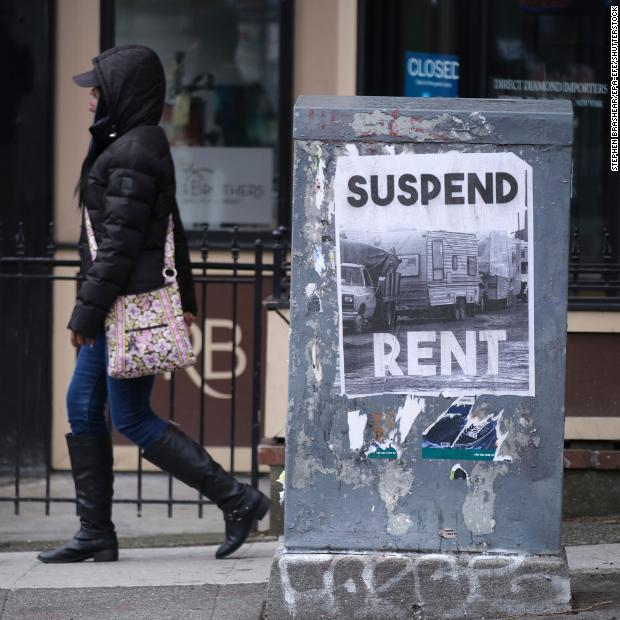

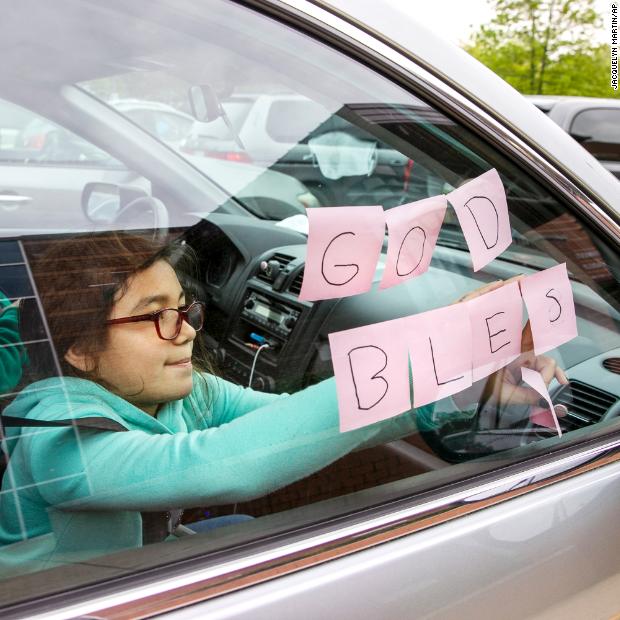

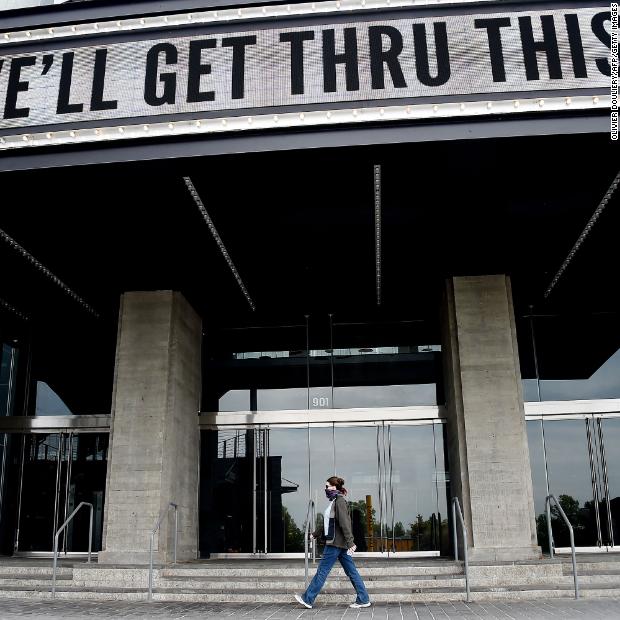
Economists also worry about whether consumers will feel comfortable going back to restaurants or traveling after restrictions lift. For people like Hull this could mean less work and much lower tips after the reopening. Cautious consumer behavior could delay an economic recovery.”You’re going to see weaker demand for jobs that involve a lot of face-to-face interaction,” Ozimek said, adding that jobs that can be done remotely will be relatively safer throughout the crisis.
You're going to see weaker demand for jobs that involve a lot of face-to-face interaction,"
But experts also worry about a second wave of Covid-19 infections in the second half of the year. A resurgence in cases could steamroll a recovery. It’s also a scary world for recent graduates looking for employment during the crisis.Micaela Stoia, 22, from Oxnard, California, was furloughed from her job as a dog trainer at Petco when the lockdown started. She filed for unemployment benefits, but has yet to receive any money. Stoia studied political science in college and has aspirations to eventually work in government. “By the time I’m 26 I will need a steady job with good benefits,” she said. “I have type I diabetes and I need those health benefits. I’ve been working toward that goal, but the pandemic has put everything on hold.”
“It’s a little hard to get started if I only have my degree and no experience,” she added. “Nobody is hiring for internships.”Ozimek predicts state and local government jobs could be next in line for layoffs. Various municipalities have already had to lay off workers. Dayton, Ohio, for example, has furloughed a quarter of its workforce, and Detroit is looking to lay off part-time workers to fund its multimillion-dollar budget deficit.
Governments respond
Comparisons to the Great Depression may seem dire, and although the coronavirus jobs crisis is historically deep, economists don’t predict it will be as severe as the economic downturn in the 1930s. The Great Depression lasted for 12 years, and the US lacked a social safety net at that time.In the current crisis, the government acted quickly to expand unemployment benefits, extend funding to businesses and send out stimulus checks to individuals earning less than $99,000 a year. Although those programs have been far from perfect, they nevertheless provide much needed relief to some workers and employers.In response to the pandemic, Congress expanded unemployment benefits to include an additional $600 per week for up to four months.A jobs crisis
- Here’s what you need to know if you’ve lost your job
- Unemployment claims from Asian Americans have spiked 6,900% in New York. Here’s why
- Laid-off workers may have to give up unemployment benefits as states reopen
- Thousands of government workers put together the historic jobs report while working from home
It also expanded who can file for unemployment benefits to include contractors, the self-employed and workers in the gig economy. But many states have struggled to keep up with the sudden onslaught in unemployment claims.New York Gov. Andrew Cuomo said in April that the state hired an additional 1,000 people just to process claims. In neighboring New Jersey, Gov. Phil Murphy was looking for volunteers who know the decades-old computer programming language COBOL because many of the state’s systems still run on older mainframes.And the backlog hasn’t helped people get their benefits payments in a timely manner. In late April, Florida reported that the state had paid out less than a quarter of claims filed since mid-March, for example. It will take time for the US labor market to recover from this unprecedented hit. Federal Reserve Chairman Jerome Powell said last week that it would be a while until America gets back to its historically low February unemployment figure. — Tami Luhby and Katie Lobosco contributed to this report.
Source: edition.cnn.com

